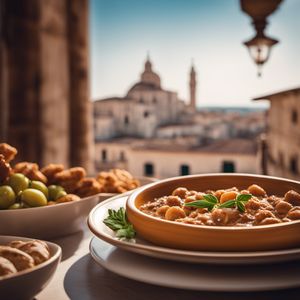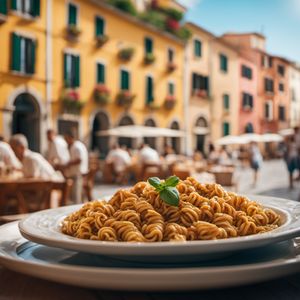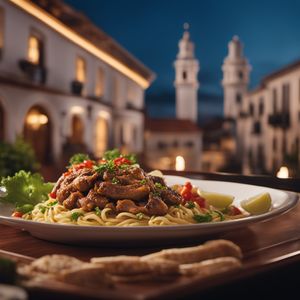
Dish
Olive Ascolane
Olive Ascolane is made by first removing the pits from large green olives. The olives are then stuffed with a mixture of ground meat, cheese, and herbs. The stuffed olives are then breaded and fried until they are crispy and golden brown. This dish is typically served as an appetizer or snack.
Origins and history
Olive Ascolane is a traditional dish from the region of Marche in Italy. It is believed to have originated in the town of Ascoli Piceno, which is known for its delicious cuisine. The dish is typically served during the holiday season and at special events such as weddings and festivals.
Dietary considerations
This dish is not suitable for vegetarians or those who do not eat meat or cheese. It is also high in fat and calories, so it should be consumed in moderation.
Variations
There are many variations of Olive Ascolane, but the basic recipe remains the same. Some people use different types of meat such as pork or beef, while others use different types of cheese such as mozzarella or provolone. Some recipes also call for the addition of vegetables such as onions or peppers.
Presentation and garnishing
Olive Ascolane is typically served on a platter or in a large bowl. The dish should be garnished with fresh herbs such as parsley or basil to add color and flavor. A sprinkle of lemon juice can also be added for extra acidity.
Tips & Tricks
When making Olive Ascolane, it is important to use high-quality olives and fresh ingredients. The olives should be pitted carefully to avoid damaging the flesh. The stuffing should be well-seasoned with herbs and spices to bring out the flavors of the meat and cheese.
Side-dishes
Olive Ascolane is typically served as an appetizer or snack. It can be served on its own or with a side of marinara sauce for dipping. Some people also serve it with a side of roasted vegetables or a salad.
Drink pairings
This dish pairs well with a crisp white wine such as a Pinot Grigio or a Sauvignon Blanc. The wine helps to cut through the richness of the dish and complements the salty flavors of the olives and cheese.
Delicious Olive Ascolane recipes
More dishes from this category... Browse all »

A-gei
Taiwanese cuisine

Abará
Brazilian cuisine

Aburaage
Japanese cuisine

Acciughe sotto pesto
Italian cuisine

Accra
West African cuisine

Aggala
Indian cuisine

Airplane Olive
Greek cuisine

Alaisa fa'apopo
Samoan cuisine
More cuisines from this region... Browse all »

Abruzzese and Molisan cuisine
Savory, Earthy, Rustic, Hearty

Apulian cuisine
Fresh, Savory, Rustic, Simple

Arbëreshë cuisine
Savory, Tangy, Herbaceous, Spicy

Basilicatan (Lucanian) cuisine
Savory, Earthy, Rustic, Hearty

Ligurian cuisine
Light, Delicate, Herbaceous, Salty

Lombard cuisine
Rich, Savory, Meaty, Cheesy

Neapolitan cuisine
Bold, Savory, Spicy, Tangy, Fresh

Roman cuisine
Fresh, Light, Herbaceous, Tangy, Savory

